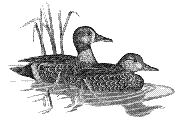United States Fish and Wildlife Service

Waterfowl Management Handbook
Date of this Version
January 1989
Abstract
Purple loosestrife is an herbaceous perennial weed that is native to Eurasia and probably arrived in eastern North America with early maritime traffic. The spread of this alien by 1900 (Fig. 1) was closely associated with canal and waterway traffic. By 1985 (Fig. 2), this aggressive weed had spread into all of the contiguous States north of the 35th parallel except Montana; similarly, all of the southern provinces of Canada had been invaded. In the last 20 years, loosestrife has become well established in reclamation projects and riparian wetlands in the West and Northwest. It has also invaded estuarine marshes in British Columbia.
The impact of this weed on North American wetland habitats has been disastrous. In many areas, purple loosestrife makes up more than 50% of the biomass of emergent vegetation. Moreover, these displacements are seemingly permanent, as seen in the Northeast, where many purple loosestrife stands have maintained themselves for more than 20 years. The effects of these changes have not been well studied but biologists believe that serious reductions in productivity of waterbirds and aquatic furbearers have resulted. Platformnesting species cannot use the stiff loosestrife stems for nest construction, nor are stems or rootstocks palatable to muskrats. In addition, dense, closely-spaced clumps do not provide brood cover or foraging areas. Although white-tailed deer and livestock will readily graze on young, succulent plants, palatability declines by late June and the forage value of wetland pastures that have been invaded by purple loosestrife is seriously reduced.


Comments
Published in Diana H. Cross and Paul Vohs (eds.) Waterfowl Management Handbook. Fort Collins, CO: U.S. Fish and Wildlife Service, 1988. Online at http://www.nwrc.usgs.gov/wdb/pub/wmh/contents.html